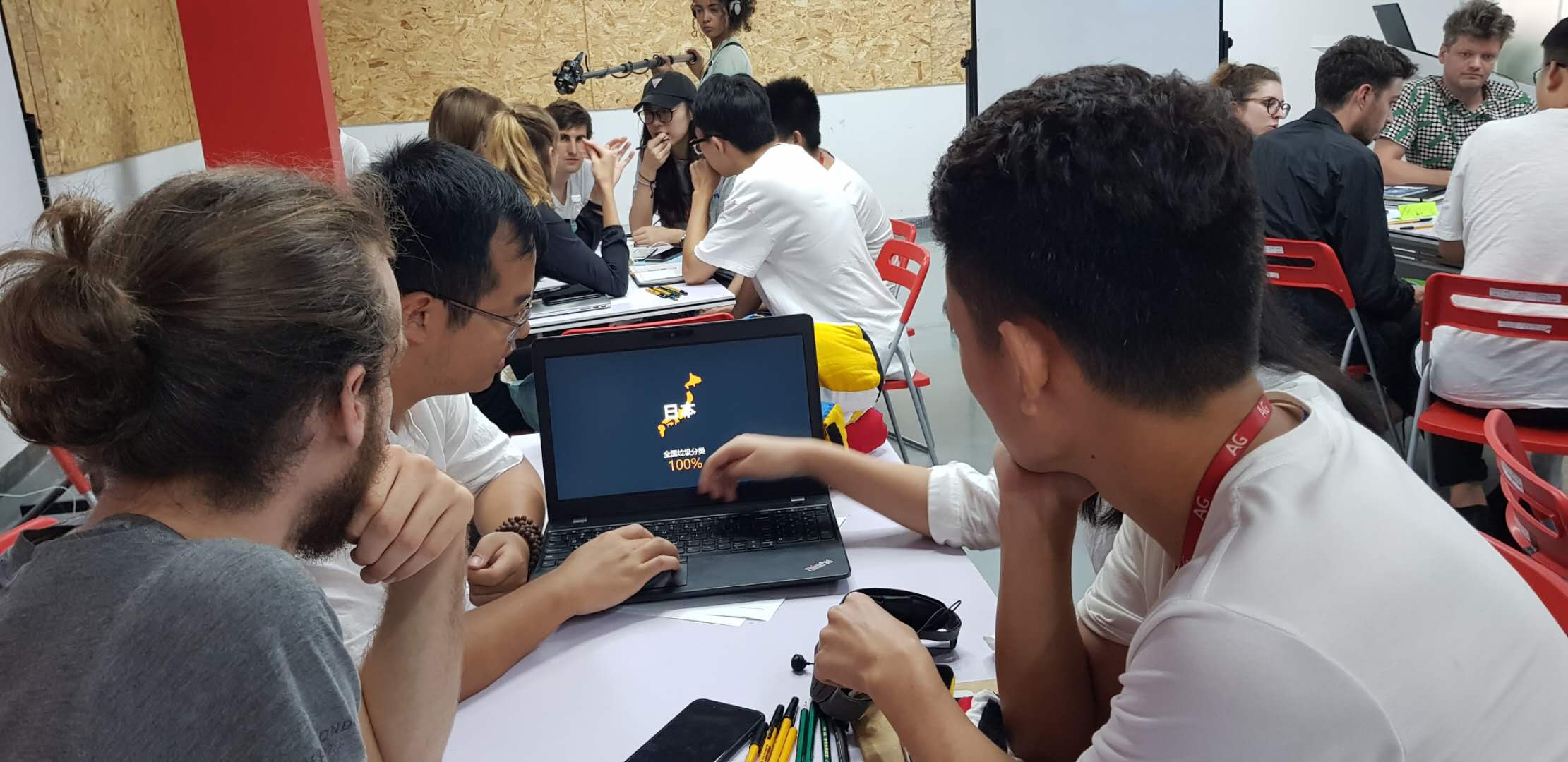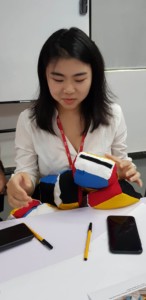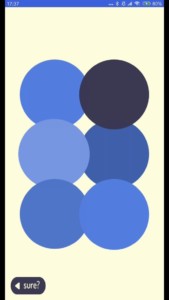
Hi everyone,
Here we are again, to give you some more insights about how the prototyping phase of the Toygether plush toy proceeds!
After a very instructive feedback from the HAX accelerator, the team did not take a second to rest. All the critics have been taken into account, the most important one being that our prototype will need to be tested as soon as possible. In fact, our plush toy must be accepted by the children using it! To verify and prove to parents that the interaction is playful enough, a meeting with local Chinese families might be organized in the next few days. This gave our team extra motivation to keep on hard working. The final goal stays getting a minimalist fully working prototype by Thursday evening (July 19th), to showcase our product during the next presentations that will take place in Hong Kong.
On the design and business sides of the team, Saturday has been used to meet young Chinese designers from the Artop Group (AG). The firm works with more than 2000 brands – Philips, Whirlpool, Microsoft, Intel, Qualcomm, Sony, Boeing, BMW, Bentley, Huawei, etc – (more information at http://www.artopcn.com/en/ ). Many wild ideas for the design of the plush toy have been suggested, together with some insight on how the Chinese market could react to it. The key suggestions from the Chinese designers were that the plush toy should be more customizable. The plush toy should allow for children’s cognitive development. To this aim, their advice was to keep strong interactions with the child, even when the plush toy was not connected with the parent’s application. Therefore, the plush toy could be eventually adapted to a more modular shape. Here follows an example of modular plush toy, using scratches to let the child enjoy reconfiguring its beloved toy.

The question of how to ensure the electronic connectivity between different detachable parts of the toy remains unanswered in the moment. In the end, the shape of the current Toygether plush toy has been found adequate, by the Chinese designers, for children aged between 2 and 6 years old. It was also interesting to discover how their products were looking, before advising them on how to eventually better adapt their designs to Western countries.
On the electronic engineering side of the project, Chloe went to the Huaqiangbei electronic market to find connection wires. Then, she has been able to assemble an intermediary prototype of the inner electronic skin of the toy, in order to test as quickly as possible the assembly of the soft electronic components.

For timing constraints, the development kit from Espressif (ESP-WROOM-32) has been decided to be kept for this prototype. A new pin-out board has thus been realised by Simone, in order to attach the wires fixed on the electronic skin, with the development kit.

On the software part of the project, Yann worked on adapting the design of the application, after having closely collaborated with Luca, our media interaction designer.

You might have clearly noticed that bringing a prototype to life mainly depends on close collaborations between different competencies within the team.
To be continued…
Simone, for team Toygether.

